Horticultural charcoal is just one of many carbon-based materials to have hit the botanical spotlight.
Like its fashionable cousin, “activated” charcoal, horticultural charcoal has long been touted to have a variety of benefits when it comes to gardens, indoor plants, and the wider terrarium/vivarium world.
From filtering and enriching soils to absorbing bad odors, there’s seemingly nothing that this black magic dust can’t do.
In reality, the science and the marketing spiel around charcoal for plants is a little murkier.
Honestly, it does have tremendous potential benefits when used for the right reasons.
In this guide, we’re going to filter through the benefits (see what I did there?) to see exactly how you and your plants can make the most of horticultural charcoal.
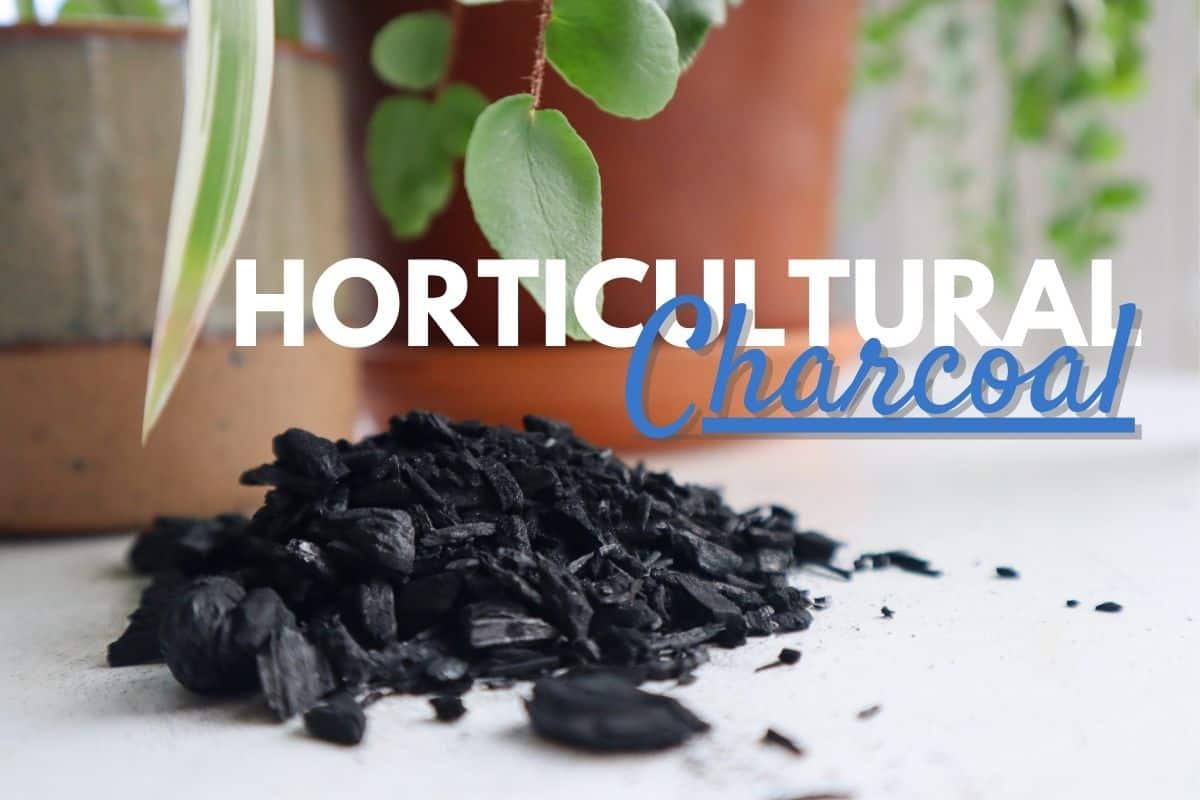
Terrarium Tribe is reader-supported. When you purchase through links on our site, we may earn an affiliate commission (at no further cost to you). 💜
What is Horticultural Charcoal?
Charcoal is the dusty black carbon structure that’s formed from the burning of wood and other organic materials.
It’s used to power our grills, bonfires, and now… plants?
Of course, not all charcoal is made equal. Horticultural charcoal is just one of many types of charcoal that fit on the “charcoal spectrum,” so to speak.
Starting from cheap BBQ charcoal briquettes at the low end and leading to filter-grade activated charcoal at the high end.
In many ways, they’re all produced from the same process (it’s called pyrolysis), but it’s the material that’s burned and the temperature that’s used that makes all the difference.
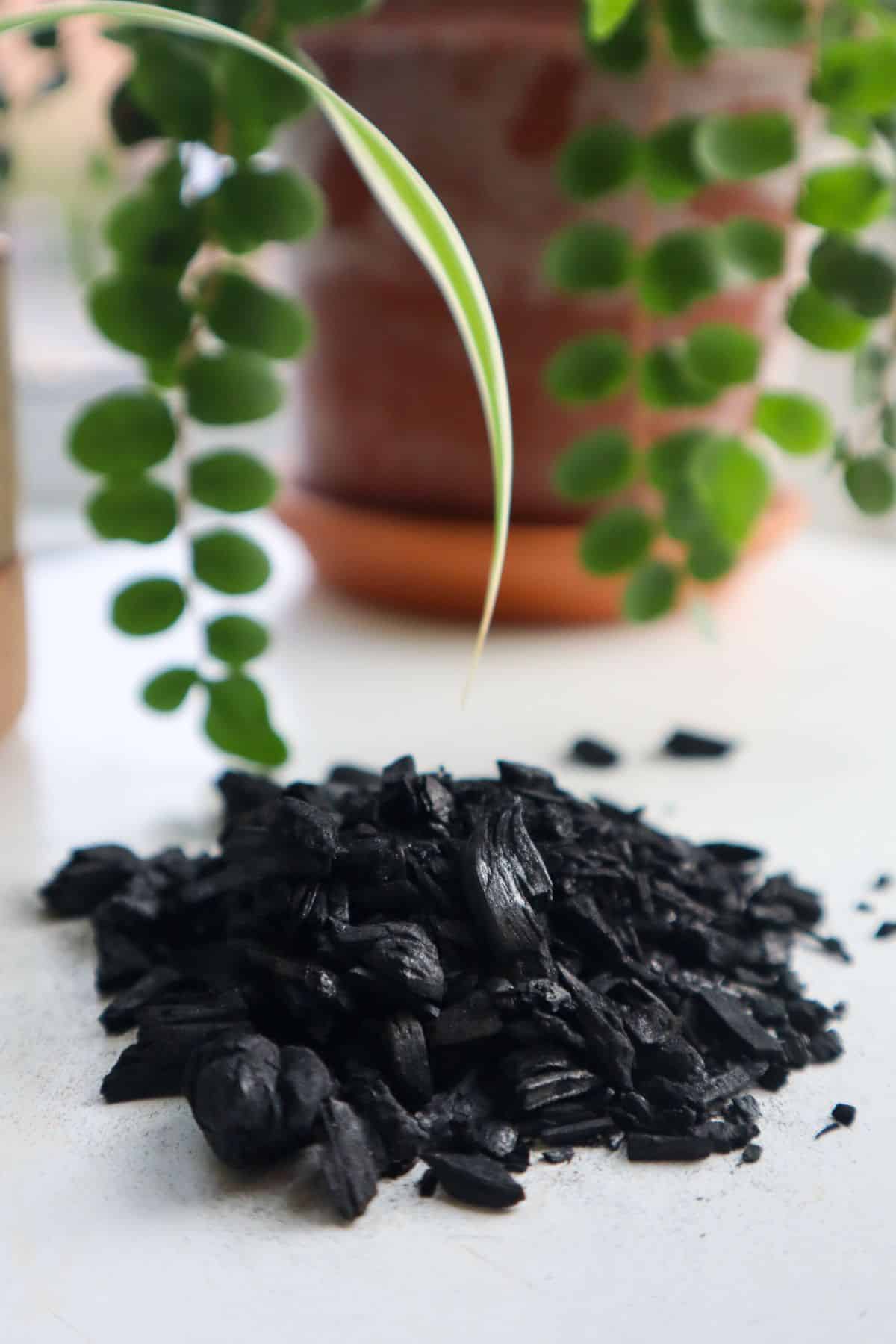
Created from the burning of organic material from a variety of sources, horticultural charcoal is seemingly a loose umbrella term for “straight” charcoal that’s supposed to be safe for use with plants (i.e., has nothing weird added to it).
The versatility of sources helps to keep it available and affordable, but the final product can vary a lot because of it, e.g.,
- Charcoal from coconut husks tends to have a lower pH, so they’re easier to balance.
- Charcoal from hardwoods retains many of the woods’ original transport vessel structures. Which directly translates to a better flow of liquid and air in a substrate.
Finally, there seems to be a lot of overlap with the term “biochar,” too, though it’s normally associated with large-scale agriculture.
Horticultural Charcoal vs Activated Charcoal
Understanding the charcoal spectrum is the key to understanding the difference between horticultural charcoal and activated charcoal.
There’s a lot of overlap, but the key differences will influence their effectiveness in different situations.
Going up the spectrum, charcoal increases in:
- The heat which it’s fired.
- The price (unfortunately).
- The porosity of its surface.
It’s actually the porosity of charcoal that drives most of its benefits.
At the top of the spectrum, activated charcoal has been cooked at incredibly high temperatures to produce a highly porous product that is able to aggressively bind compounds.
👉 Shop activated charcoal on our store.
As mentioned earlier, horticultural charcoal lands in the middle of the spectrum.
It hasn’t been purposefully “activated” to artificially enhance its porosity, so it’s sometimes referred to as “inactive carbon.” But its porosity still gives it a latent binding ability – just significantly less.
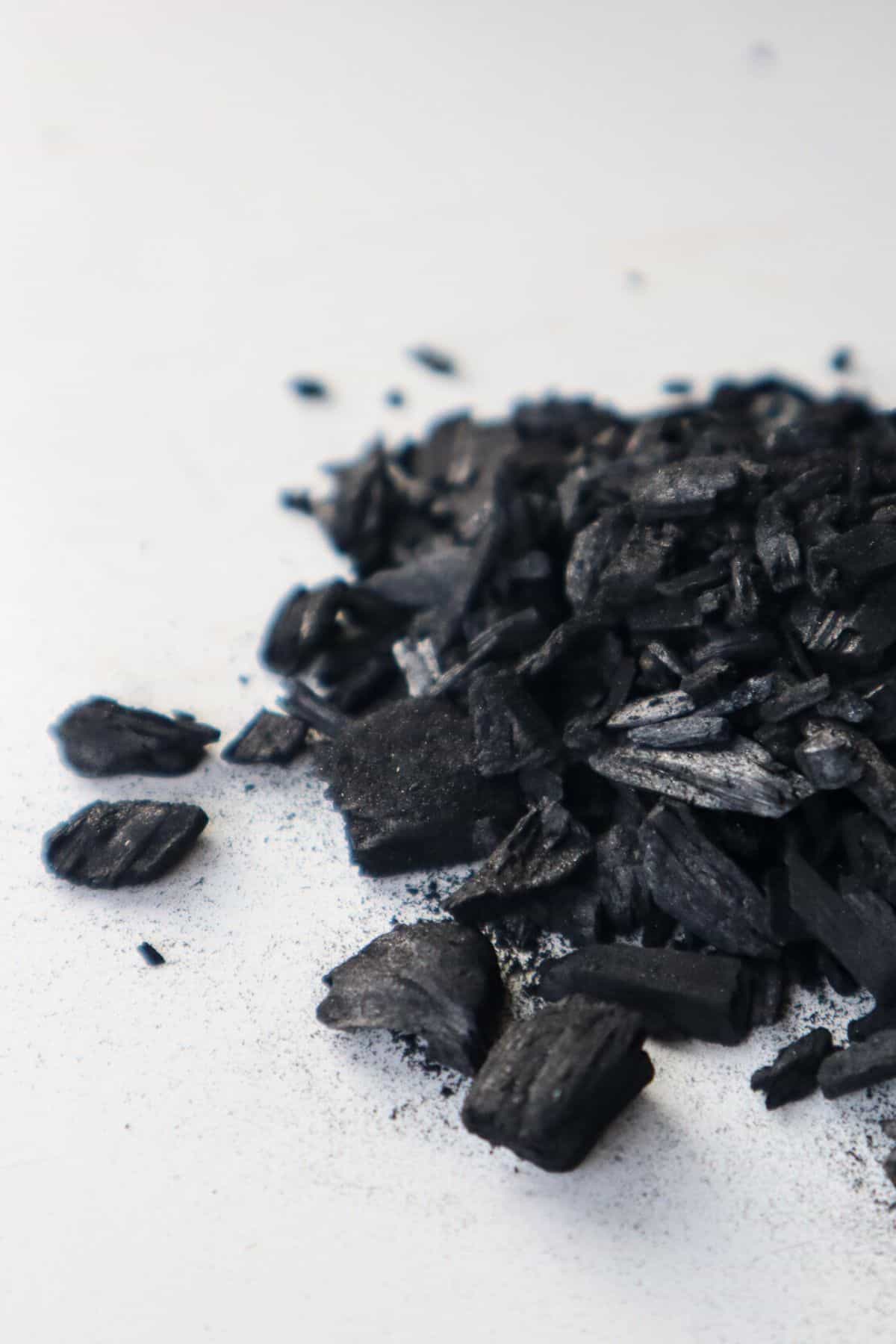
Horticultural Charcoal for Plants – Pros and Cons
The reported benefits of horticultural charcoal are wide-ranging and diverse.
As a former research scientist, I’ve considered them as best I can using my own horticultural experience and the current literature that I have available to me.
Let’s get into it.
Pros
1| Soil aeration
Remember the high porosity that we mentioned earlier?
All that extra surface area helps to create air pockets in a soil mix, which in turn helps to facilitate the movement of air.
This is super important in maintaining a healthy root system and can make all the difference with tropical plants.
Seeing as charcoal made from hardwood tends to have a larger porous structure that can further contribute to airflow through a substrate. So that’s what I’d opt for where possible.
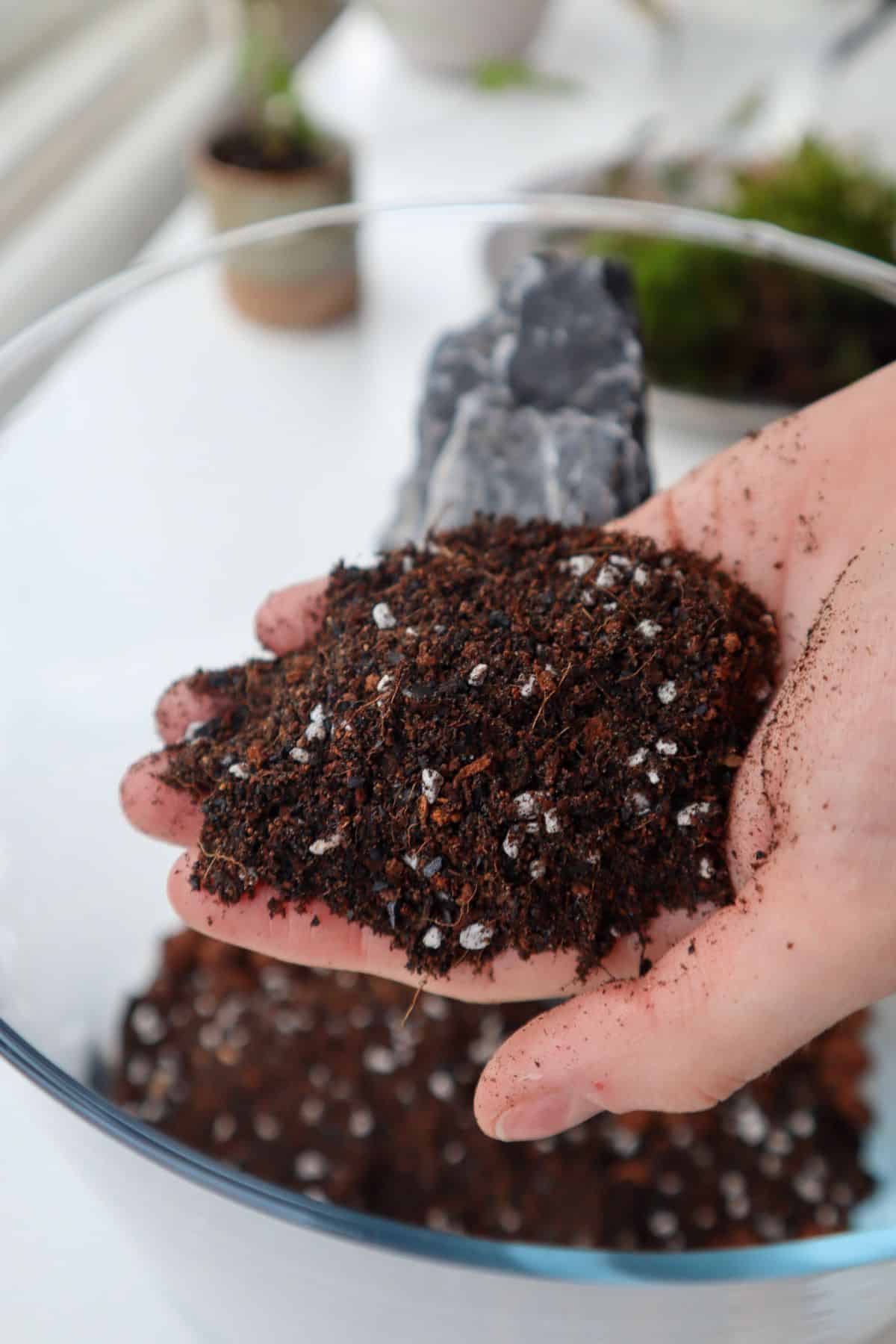
2 | Drainage
Drainage and aeration go hand-in-hand, as those air pockets allow for the flow of liquid as well as air.
It’s also essential for plants for exactly the same reason – root health.
Roots that are sat in a saturated environment won’t be able to breathe properly, so it’s important that excess water can drain away.
The porosity paired with the natural hydrophobic nature of charcoal helps to promote effective drainage in a mix.
3 | Water retention
Though the outside of charcoal is mostly hydrophobic, the pores themselves can fill with water when left in a saturated medium.
So, they can act as a reservoir inside your substrate. Handy right?
This can help to buffer any overwatering (I’m sure none of you are guilty of that…), and once your substrate dries out, it can deliver that stored water back to the plants.
4 | Resilience
Charcoal will not degrade for a very long time.
So, it has that advantage over other organic soil amendments like orchid bark which will break down slowly over the course of a few years.
5 | Bioactive support
One final use of those versatile pores on the charcoal’s surface lies in housing microflora populations.
The added surface area on the charcoal can help to establish beneficial microbes (bacterial and fungal colonies). Ideal for bioactive terrariums and vivariums.
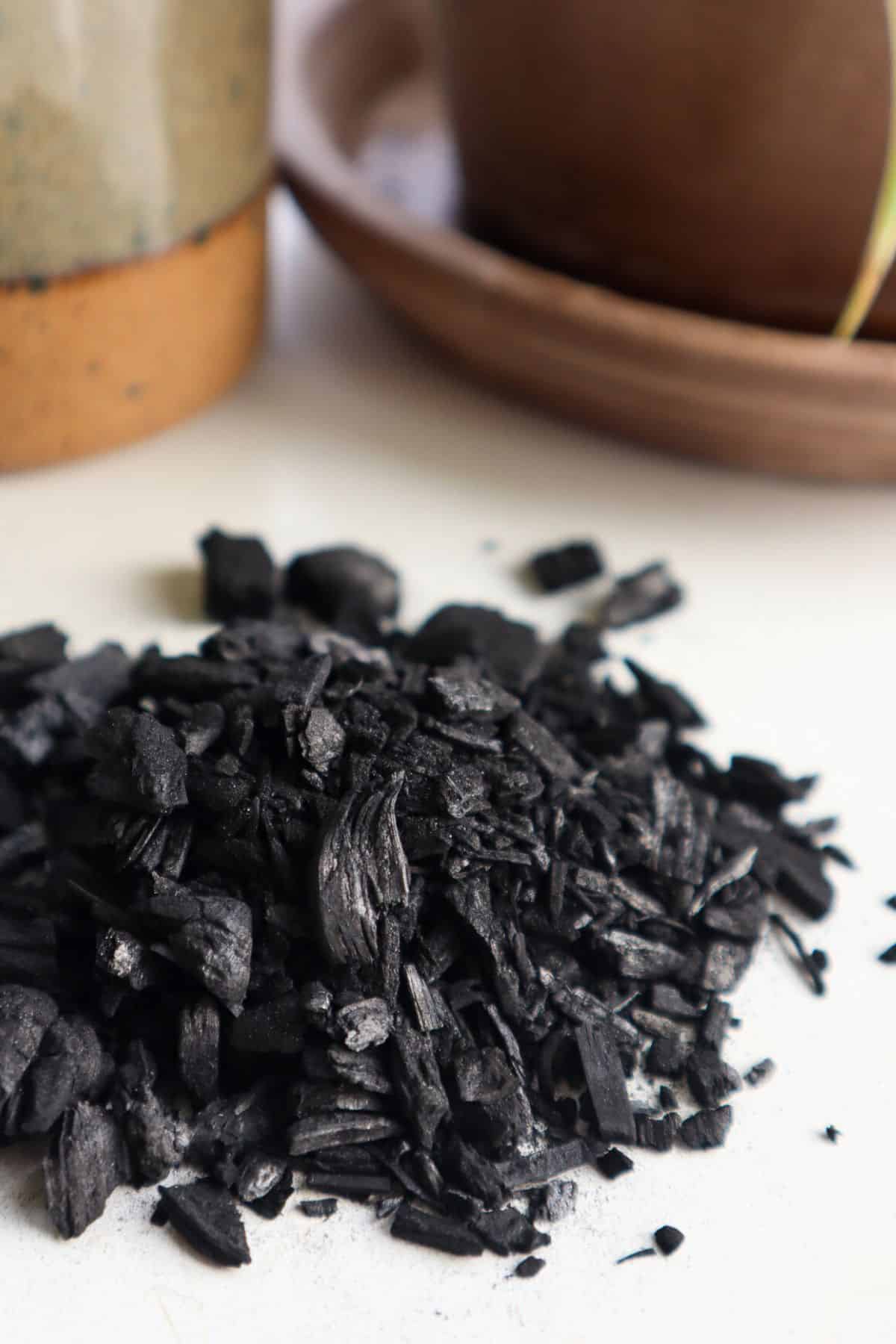
Debatable Pros
1 | Purification
Charcoal’s ability to bind potential contaminants and impurities is not up for debate.
It works… almost too effectively.
The practical reality of charcoal as a filter is that its use is finite.
Put it this way: if horticultural charcoal is a sponge that soaks up particles and holds on to them – that sponge gets full surprisingly quickly.
It’s recommended that filters using charcoal in aquariums are changed every 4 weeks. So that’s the kind of time period we’re working with.
In the context of terrariums, activated charcoal can last significantly longer, but remember, horticultural charcoal has a much lower binding capacity.
Suddenly, using this type of charcoal as a filter in a substrate or terrarium doesn’t seem quite so realistic.
2 | Odor absorption
In a similar vein, there’s an idea that charcoal will bind and nullify any substances that produce an unpleasant odor – thus eliminating the smell.
It makes sense, and again, activated charcoal is commonly used in terrariums for this exact reason.
But, just like a cat litter tray – at some point, it’s going to stop working, and you’re going to need to change it…
Using horticultural charcoal, you’ll need to change it far more frequently.
3 | Soil enrichment
Charcoal is often reported to be able to hold on to excess fertilizers and distribute them to plant roots over time.
This is a big one in agriculture, and the former is certainly true.
However, its high cation exchange capacity (binding ability) means it binds nutrients very strongly. Again, sometimes too strongly. Depending on the environment, it may not be very good at releasing those nutrients.
The biggest factor here is the alkalinity of the soil.
More alkaline = More tightly bound.
Which is all well and good, except for the fact that horticultural charcoal can be very alkaline.
Cons & Risks
Alkalinity
This is often touted as a benefit in being able to balance an otherwise acidic soil (which is fair enough), but you do have to be careful.
Charcoal can easily spike your overall substrate pH above healthy levels if used in high proportions.
In fact, “pH outside the optimal range can also lead to so-called “nutrient lockout”—and nutrient deficiency.”
Which is not ideal!
The alkalinity depends partly on the source of the charcoal, but you’re not likely to know unless you test it yourself (which we realistically never do).
So, if I use charcoal as part of a mix, I tend to keep it in relatively low amounts. Around 10% or so max is enough to get the benefits without the risk.
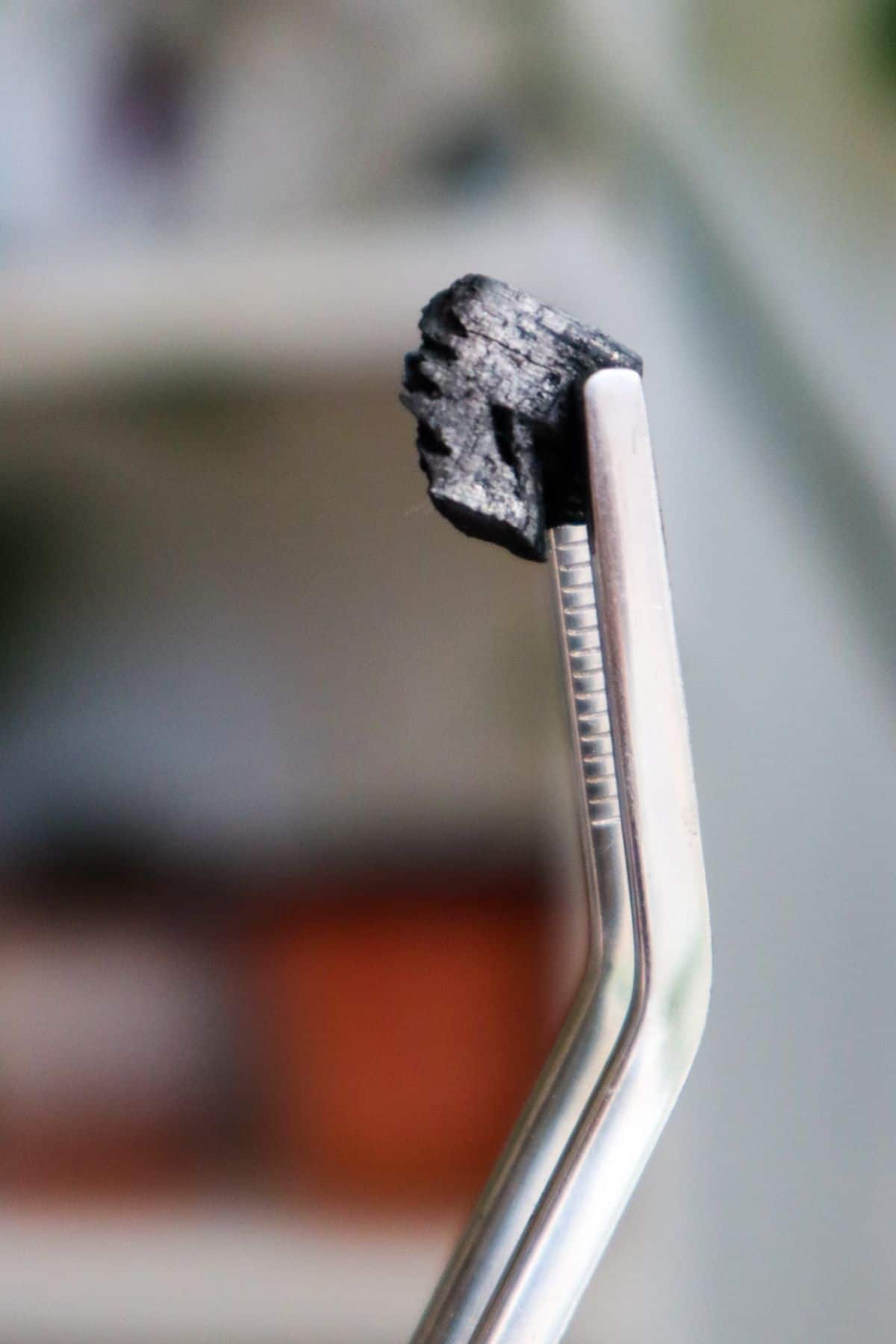
Horticultural Charcoal Uses
As a Soil Additive in Plant Substrates
Horticultural charcoal (and its alter ego biochar) is finding increasing use as a tool for growing plants and regenerating soils.
As a minor soil amendment to improve aeration, drainage, and a bit of water retention – I’m all for it.
In the right places, it’s a useful tool to have in your horticultural kit.
Charcoal is an easy addition to improve basic potting soil, and I’ve used it as part of more complex tropical blends too.
Just remember to go easy on it, I never go above 10% charcoal in a mix. That being said, the traditional ABG mix uses 1 part in 7 of charcoal – so there’s arguably some wiggle room.
In terms of things you can use instead, orchid bark, perlite, and pumice are all good options.
👉 We use biochar in our custom terrarium mix – so we definitely value its contribution!
As a Filter In Terrariums and Vivariums
A charcoal layer is commonly seen as a way to keep terrariums and vivariums “fresh” by filtering out any toxins as water permeates through.
This practice does have widespread adoption (and it’s still recommended across a variety of industries), but to be honest, there’s no data to really explain to what extent.
Anecdotal evidence is varied. With some terrarium builders swearing by it and others seeing no difference in projects that use it.
It makes sense in theory, and it certainly can’t hurt.
In theory, a charcoal layer could create a nutrient-empty zone through pH spiking, but it shouldn’t be a problem as long as you’re not directly growing your plants in it.
Microfauna Breeding
Springtails are commonly cultured in charcoal for ease of use.
Firstly, they’re much easier to see when they’re contrasted against the dark black blocks. It’s hard to track how the culture is developing when they’re all hidden in a thick substrate.
However, it’s mostly for how much easier they are to add to a terrarium/vivarium.
They can often be cleanly washed into a container with a jet of water.
Where to Buy Horticultural Charcoal
These days, horticultural charcoal is widely available.
You’ll see many products labeled as such and many more described as biochar.
Any reputable company producing material designed for plants should be safe, but I’d still take care to assess the source to make sure you’re getting something reliable and sustainable.
Now It’s Your Turn
What has been your experience with horticultural charcoal?
Do you think it’s an effective filter for terrariums? Or do you see it more as a cheap and easy soil additive?
Let me know in the comments!

Hello Dan,
I have enjoyed your sharing of your knowledge.
I have been building terrariums for a few years now and have used your suggestions from time to time,
I am a retired plant grower and sell my terrariums at a local arts market on Saturdays.
My question is, I’m creating 4″ clear ball ornaments with mini plants such as Java moss, Oak leaf fig, and peacock moss. I use a base of granulated coconut charcoal, then a mix of coco Coir and milled sphagnum. This covers about 1 1/2 inches of the bottom.
My question is your thoughts on stabilizing the planting to keep it from getting the contents all mixed up from a jarring motion.
I was curious what ideas you could share to help resolve this.
I have tried elmers glue in the soil with not much luck.
Any ideas would be greatly appreciated.
Thank you so much for your time to help me with this.
Thank you, Ben Staloff
Hi Ben, I appreciate the kind words! 🙏 For your dilemma, have you considered using aquarium soil instead? Though it can be harder to plant delicate roots into, I do find it locks in place to some extent.
Thanks Dan, I’ll give it a try.
Hi I hve been using activated charcoal in my terrariums but really don’t know if I am actually using it in the right way so would appreciate your advice. I hve layered it as follows -drainage layer of scoria , filter cloth/mesh, charcoal , soil
So basically the soil is sitting directly on top of it.
Another person I know mixes the charcoal in with her drainage layer
Which is best ?
Thanks
Either is fine if you’re using it for filtration, but you’ll get the extra substrate benefits if you mix it in.
Sharing with my plant peeps!!!!